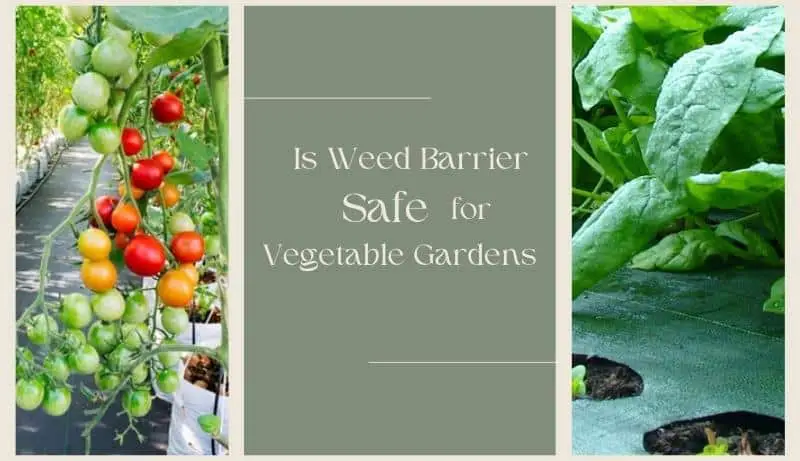Have you been getting rid of weeds all year? If so, think about using a weed barrier to stop growth.
The simplest and most popular way to get rid of weeds is to lay down a garden cloth. It prevents weed seeds from dispersing into the soil and growing or from sprouting.
Furthermore, landscape fabrics are “breathable.” This enables the soil to absorb nutrients, water, and air, which in turn nourishes plants.
While some speak highly about the fabric, others question its utility. But the question persists, is it safe to use weed barriers in vegetable gardens?
We will try to investigate the utility and importance of weed barriers in vegetable gardens. Alongside, we will answer a few queries as well.
Continue reading to find
What is Weed Barrier?
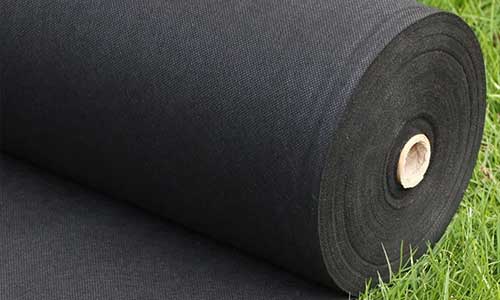
The weed barrier is often referred to as landscape fabric as well. It is a type of garden fabric typically constructed of woven or nonwoven polypropylene.
The most popular type of barrier is woven. Its mesh structure is thick enough to keep weeds out of your garden bed.
Surprisingly, the weed barrier permits water, fertilizer, and oxygen to reach your plants. Hence, landscape fabric makes a substantial pick to control weeds.
Related Post:
- Additionally, you can check our review on Weed Barrier for Vegetable.
- For more suggestions, you can read about Privacy Screen for Chain Link Fence.
Weed Barrier – the Typology
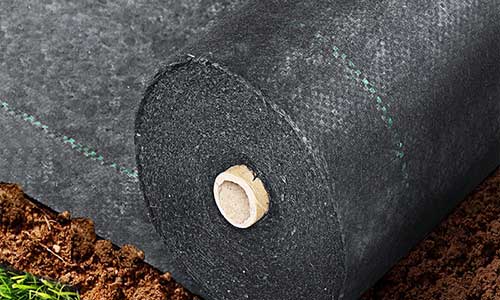
Mulch comes in a variety of forms and serves both practical and ornamental purposes. When selecting mulch, take into account the density and texture of the garden plants. Large areas around trees and shrubs may benefit from a high weed-preventative barrier, whereas tender seedlings will find it difficult to penetrate a dense layer of coarse mulch.
While the aim of the mulch should be the primary consideration, personal preference and price should also be taken into account. Popular choices comprise:
Organic Mulches
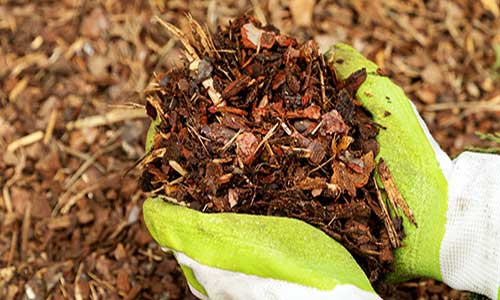
Usually, such mulches disintegrate after a season. Leafs, bark, hay, paper, and wood are a few kinds of weed barriers.
Also Check:
- Make sure you also check our guide for Is Landscape Fabric Safe for Vegetable Garden?
- Besides, you can read some How Do You Lay Weed Barrier for a Vegetable Garden?
Inorganic Mulches
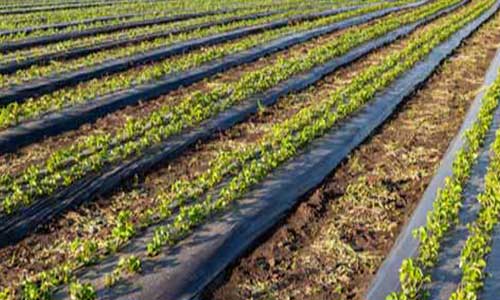
When it comes to inorganic mulches, the options are limited. However, investing in them will take you a long way.
Rubber and rocks are common kinds of mulches. Other than that, landscape fabric is a substantial pick.
Things to Consider While Buying Weed Barrier
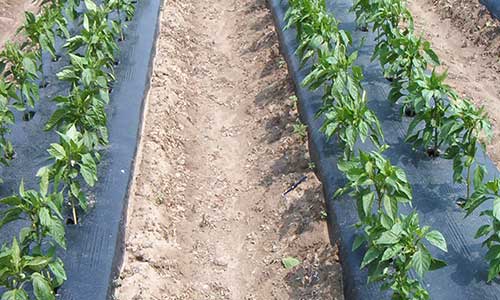
While straightforward to install, some growers may make mistakes that harm crops. If you’re putting landscape fabric for the first time, you must know its utility to ensure a good harvest. This includes:
Size
Another important consideration before putting the landscaping fabric is the real area to cover. While buying fabric, make sure it will cover the entire area.
Additionally, we recommend getting a small amount extra. That will prevent gaps between the fabric sheets.
Ideally, the trims should have a few additional inches. The reason behind it is the material will be fastened in place.
Density
When buying, the first things you should take into account are the fabric’s weight and thickness. Landscape fabric that is thick and heavy-duty is resilient and can last for years or perhaps decades.
However, the substance could end up suffocating the flora, thus plants need appropriate room to flourish. Although porous, thin landscape cloth has a relatively short lifespan of only two years.
Permeability
If you plan to use landscape fabric for a vegetable garden, make sure the fabric won’t prevent the crops from getting enough air, water, and nutrients.
Landscape fabric offers varying degrees of permeability depending on the brand. The landscape fabric becomes less permeable as it becomes thicker and more durable.
Standard polyethylene fabrics could be too thick for a vegetable garden. For that, fabrics made of polypropylene can be an alternative.
Reminders for Following Up Installation
When you’re prepared to roll the landscape fabric, lay it parallel to any garden side. Before using the metal staples, ensure the first ends are placed in place with boulders.
The sheets of landscape cloth shouldn’t have any gaps between them. Staple the fabric pieces into place after overlapping the material between sheets. Ideally, there should be a gap of about 2 inches.
That way, the plants will have room to grow. To prevent ripping the fabric into slivers, we suggest using a sharp utility knife or pair of scissors.
The landscape fabric shouldn’t obstruct the transfer of nutrients, water, and air in the soil. Finish with a 2 to 3-inch layer of organic mulch after that.
There is some contrast in a container vegetable garden. Here, the plants should be arranged in rows with the landscape fabric covering them.
Based on the vegetables in the garden, leave an adequate distance between the crops of 2-3 feet.
How to Grow Vegetables While Using a Landscape Fabric?
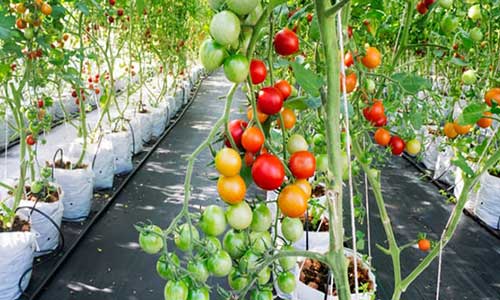
Landscape fabric prevents weeds from growing and displacing your crops as food sources. The landscaping cloth shouldn’t often be removed for several months after installation.
In some cases, you might be growing multiple kinds of vegetables. There should be adequate room to plant and replant your crops.
To effortlessly plant, harvest, and replace your crops, you must make holes in the landscape fabric.
A Weed Barrier in a Vegetable Garden: Is It Beneficial?
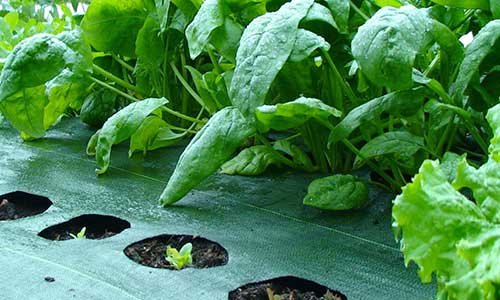
Weed barriers prevent the bulk of weeds and lawn grasses from growing in the garden bed. As a result, less weeding is necessary.
You can get rid of weeds based on the barrier type and installation method. Despite obstacles erected beneath the surface, weeds may still be able to root in the soil above. This is a typical occurrence in a vegetable garden.
Having barriers on top of the soil virtually eliminates all weed growth. Additionally, it helps retain moisture, lowering the need for watering.
Using Weed Barrier – Safe or Not?
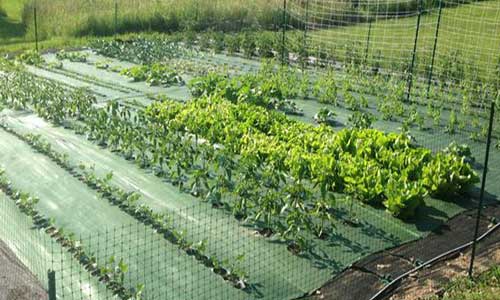
The nicest thing about this weed-proofing technique is that it is entirely organic. Furthermore, the mulch from this year will be composted for the following year. It doesn’t get any simpler than that!
Landscape fabric can be used for a variety of things. Still and all, some farmers choose to avoid using it because their crops must be replanted after each growing season.
If you can assure a proper installation, using landscape fabric in a vegetable garden is safe.
Some growers use it to warm up the soil so temperature-sensitive crops. This helps the plant to develop and bear fruits after the growing season. On the contrary, others use it to jump-start the growth season.
The soil is often chilly, compacted, and difficult to work with in the early spring. For growing vegetables, making the earth warmer and more conducive becomes crucial.
You can conveniently do that by covering the soil with landscape fabric.
Frequently Asked Questions and Answers
1. How long do fabrics for gardening last?
The quality of the cloth used for the landscape will determine how long it lasts. Low-quality materials rip easily.
The lifespan of thin landscape fabric can range from a few months to a few years with adequate maintenance. Heavy-duty landscaping fabrics often have lifespans of a few years to ten years or more.
2. What components are weed barriers made of in landscaping?
Polyester or polypropylene spun or woven fabric is the most popular type of landscape fabric.
Manufacturers use plastic weed barriers as well. Nevertheless, it doesn’t permit the passage of water or nutrients to the plants.
3. Is it possible to customize the landscaping fabric?
Yes.
Both types of landscaping fabric can be customized, whether they are thick or thin. We advise using a utility knife or scissors in place of your hands. You can get exact cuts in this manner.
4. Is weeding required before putting down landscaping fabric?
Weeds and other vegetation should be eliminated before laying the landscape fabric for the best effects.
Weeds may penetrate the material if they are not completely removed. That could eventually destroy your landscaping.
5. Does the landscaping fabric need to be replaced?
When there are obvious rips or areas where the fabric has deteriorated, you should replace it. It should be updated every few years aside from that. However, if the product is no longer effective at suppressing weeds, it must be changed.
6. How often should I change the landscaping fabric?
As long as the fabric is still usable and intact, there is no need to replace it. The landscape fabric should be changed every two to three years, though.
7. How can you prevent weeds from piercing landscape fabric?
Add mulch or rocks on top of the landscaping fabric and allow them to settle to hold it in place. The obstacles prevent weed seeds from sprouting and establishing roots in the ground.
It also stops weeds from going through photosynthesis and growing more.
8. Installing Woven Weed Barrier in the Vegetable Garden
Final Words
Landscape fabric protects crops from weeds, invasive plants, and pests. Landscape fabric is safe in a vegetable garden if the crops have room to grow.
Make sure the fabric is not impairing air, nutrients, and water exchange and you’ll be good to go. The fabric may restrict earthworms, helpful insects, and bacterial fungi’s movement. It’s not ideal, but it controls weeds.

David, the founder of The Garden Fixer, started with a passion for gardening in 2012. He has continued his passion for gardening and desire to improve his skills and wanted to share his journey and helpful knowledge with other like-minded individuals.
He launched The Garden Fixer as an outlet for those interested in learning more about Gardening in hopes they can take what they learn and apply it for themselves!
